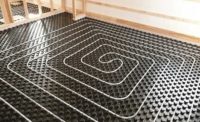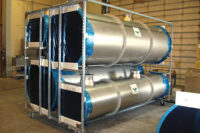Classrooms Replaced with Green Building
The Green Schoolhouse Series is the brainchild of two organizations, Cause and Effect Evolutions and Brighten a Life, which are dedicated to improving the school environment in low-income areas that are burdened with outdated and inferior “temporary” portable classrooms, many of which have been in existence for over 50 years. The Green Schoolhouse Series goes well beyond replacing a structure with newer brick and mortar. The end goal of the project is a building that is a teaching tool, educating the students and community members on the importance of sustainable living and building practices. The new buildings are also designed to facilitate the involvement of the whole community in after-school programs.
The Roadrunner Elementary school project is called Safari and has a jungle theme to stimulate and inspire the students. It is scheduled for completion in late summer. The Orangewood School project is named The Studio because it has a performing arts focus including a recording studio and indoor and outdoor stages. The Studio project is scheduled for completion in the fall. Marshall G. Zotara, co-founder and senior managing partner of Cause and Effect Evolutions said, “It is amazing to see the community and corporate American collaborate to transform learning for these public schools. Not only will the students benefit from learning in a healthier classroom setting, the studio will serve as an integral part of the surrounding community.”
Manufacturers Donate Products
Manufacturers donate equipment for the project and volunteer to assist the architects and engineers in designing the plumbing, heating, and air conditioning systems. Some of the products included in the Safari project include chilled beams and an air handling unit from Price Industries, energy recovery ventilators from RenewAire, an air cooled chiller from Trane, a ductless mini split unit from Mitsubishi Electric Cooling & Heating Solutions, and polypropylene pipe from Aquatherm.
Doug Steege, vice president marketing and sales for RenewAire, became interested in the Safari project when he learned of the organizations efforts to replace portable classrooms. “It’s a real practical program that serves an area that has very high needs,” he said.
He also wanted to be part of a project with the goal of LEED platinum certification. “It’s a demonstration system for energy efficiency and sustainable construction. It is also the bringing together of a team of manufacturers, contractors, and designers to achieve excellent sustainability practices,” he added. Renewaire donated two energy recovery ventilators installed in a custom air handler. The ventilators worked in concert with the chilled beam system to tightly control humidity to prevent condensation from the beams.
Aquatherm North America donated the piping for the plumbing and hydronic systems. Aquatherm Green Pipe fits the mission of The Green Schoolhouse Series because it has no lead, copper or iron, plus it is nontoxic and 100 percent recyclable. It is also engineered for a 50-year life. Aquatherm is also supplying its Climatherm product for the hydronic heating system. Steve Clark, CEO and president of Aquatherm North America, said, “I really like their whole game plan. It’s a demonstration of the way we could be doing things.” Aquatherm and Mitsubishi are also involved in the Studio project. Mitsubishi will provide the entire heating and air conditioning system using a variable refrigerant flow system.
The Green Schoolhouse Series is a rare opportunity for industry suppliers to showcase the latest technologies, achieve the lofty LEED platinum certification for a building, and contribute to the indoor environment. Jeff Zotara, senior partner at Cause and Effect Evolutions said, “Indoor air quality is a major problem in schools today. Each year more and more students are diagnosed with asthma and that means they are missing more days of school. The products that are being donated to our schoolhouses will provide fresh, clean air, at a comfortable temperature and in an energy efficient manner.”
Engineer & Contractors Donate Time and Labor
Unlike traditional projects, the manufacturers dictate the direction of the design. This presents some challenges for Heideman and Associates of Phoenix who is the mechanical engineer on both projects. In fact, the Safari project was the first time a chilled beam system was used in Arizona for a relatively small building. “There was an additional amount of coordination not normally found in a mechanical system of this size,” said Marlene Clark, division leader in business development at Heideman and Associates. The firm originally committed to the project because they were familiar with some of the team that was going to be onboard and they liked the collaboration of all the professionals in the city to help the community.
The mechanical contractor for the Safari Project is Midstate Mechanical, while HACI Mechanical is the contractor for the Studio Project. Both firms are headquartered in Phoenix. Midstate Mechanical is providing the labor for HVAC, piping, and plumbing with a crew of about 18 people. The company has done several LEED projects but this will be the first LEED platinum effort involving leading edge technology. Lisa McFate, marketing manager for the company, indicated the project will include a “truth wall” which has clear plastic so the students can get a view of the “internal organs” of the building which includes the Aquatherm piping and the electrical wiring.
HACI Mechanical was a great fit for the Studio Project at the Orangewood school because the contracting firm is only four miles away and they have employees with kids that go to the school. According to Tim King, president of HACI Mechanical, “It seemed like a great cause.” The company will provide labor for the HVAC and plumbing installations.
The Safari and Studio are the first in a series that are planned through the joint efforts of Cause and Effect and Brighten a Life. A third school in Phoenix at the Rio Salado Community College is called The Loft and is scheduled to break ground in the winter of 2013. Based on the initial success in Phoenix, additional projects are planned in Seattle, San Diego and Los Angeles in 2014. In 2015 they are targeting San Francisco, Dallas, Boston, Chicago, Washington D.C. and Minneapolis.
For more information on the Green Schoolhouse Series, go to www.greenschoolhouse.org.
Publication date: 9/10/2012







